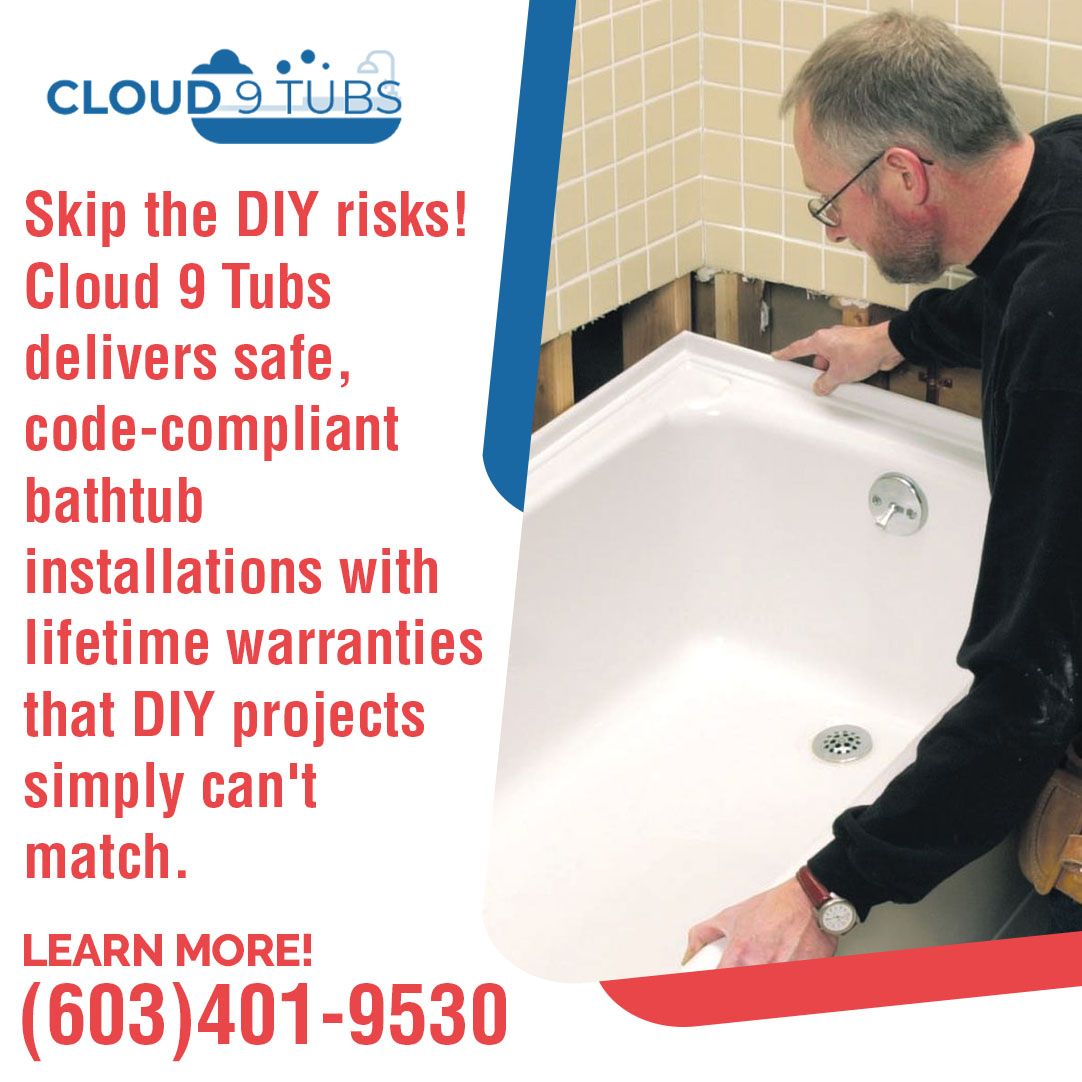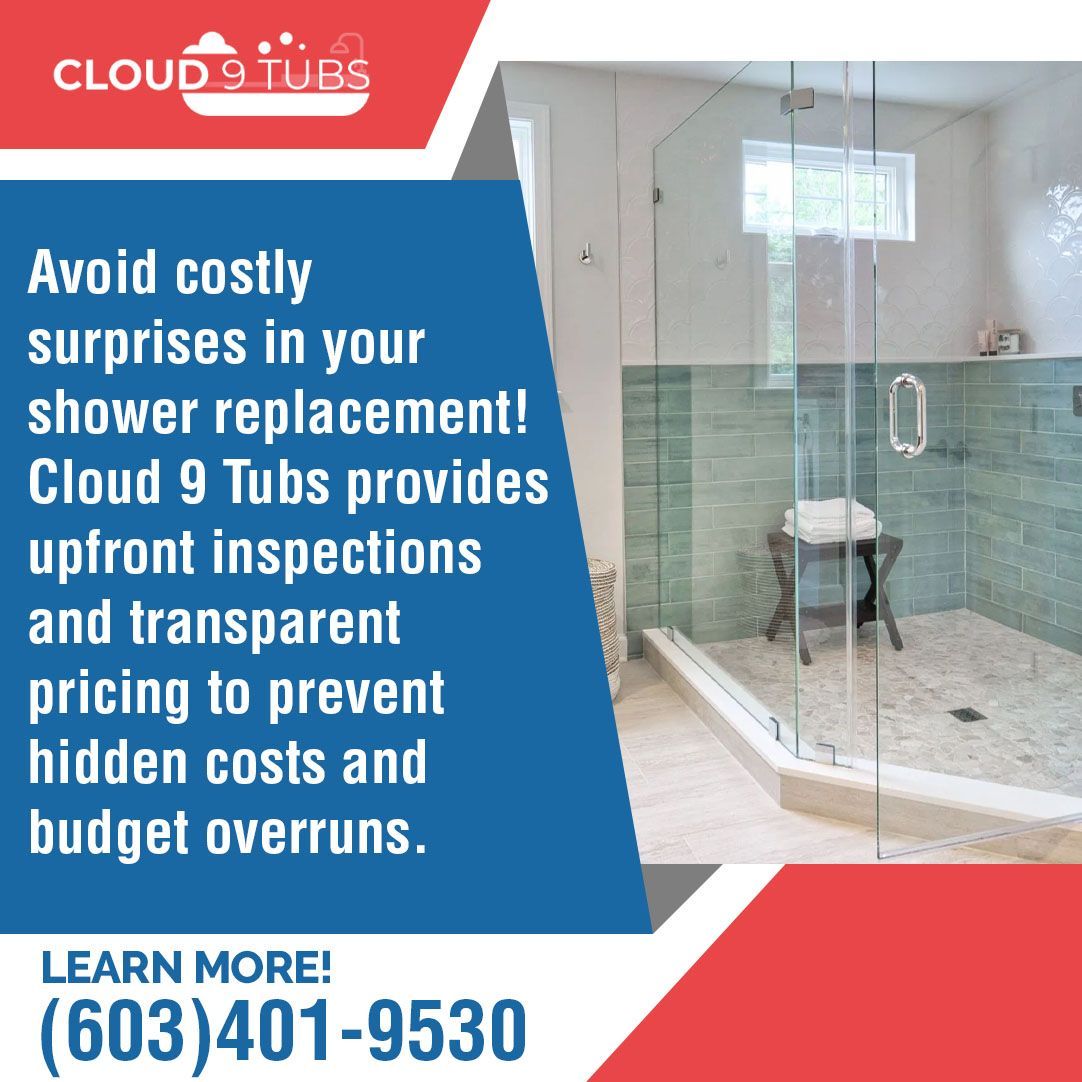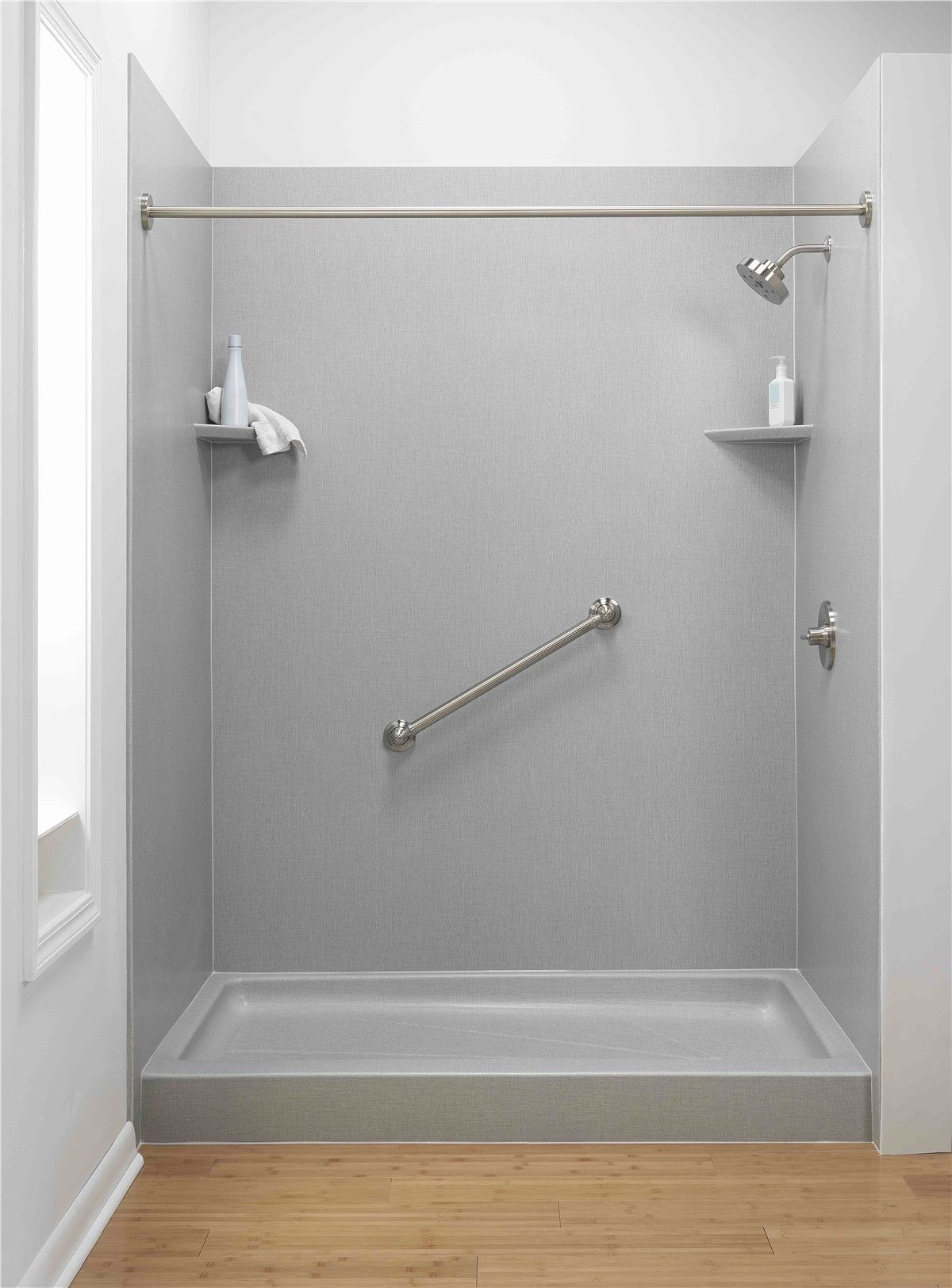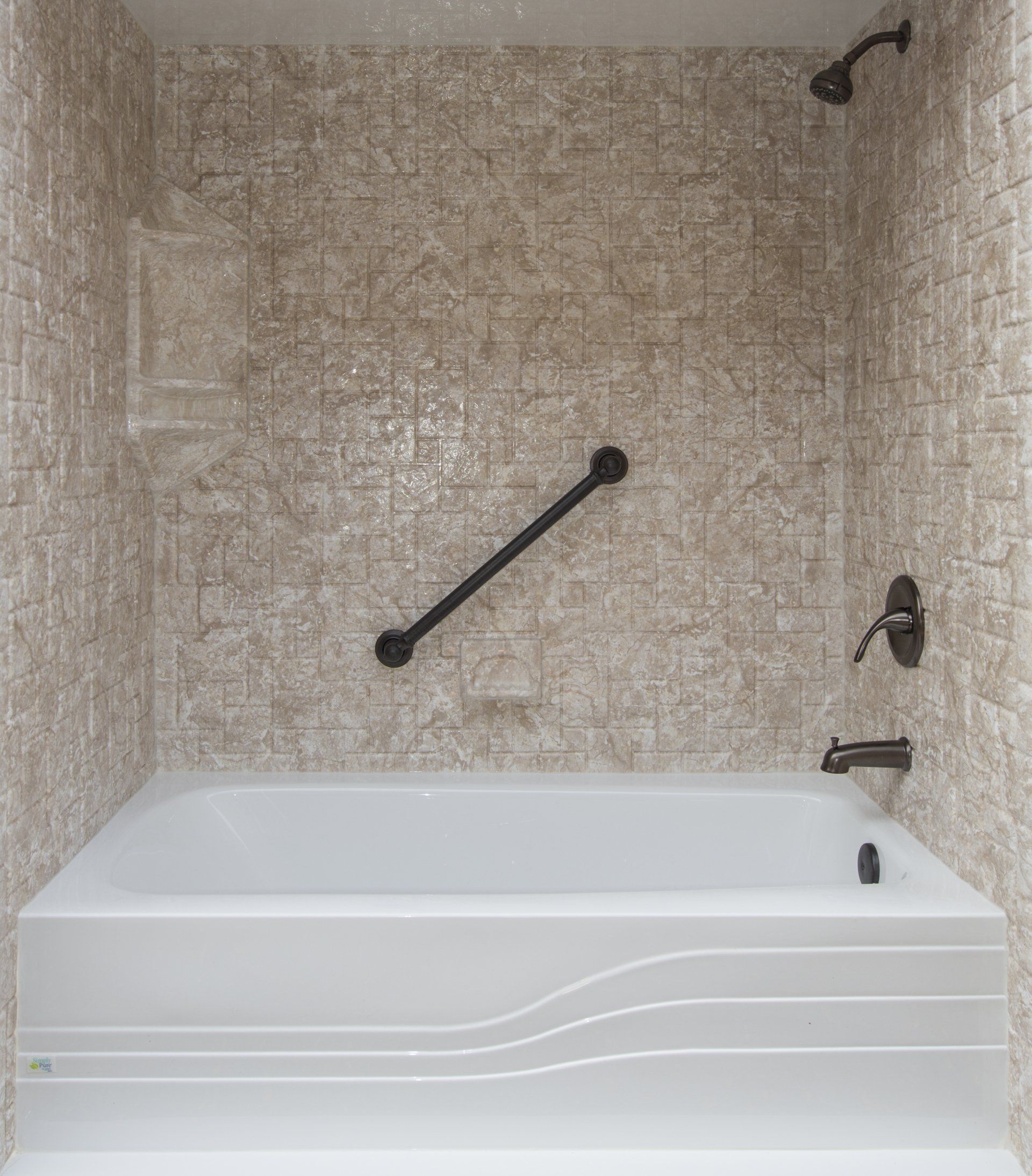5 Common Mistakes to Avoid When Converting a Bathtub to a Shower in Dover, NH
More homeowners across Dover, NH, are choosing to convert their bathtubs into showers. In homes where a traditional tub is no longer suiting the daily needs, it’s a practical way to make bathrooms more accessible, reduce upkeep, or make better use of space.
But while a
bathtub-to-shower conversion can bring real improvements, it’s not without challenges. If certain details, like drainage, waterproofing, or structural compatibility, are overlooked, the upgrade may not last as long or perform as well as expected. These avoidable issues are usually caused by rushed or incomplete installations.
At
Cloud 9 Tubs LLC, we take a practical, detail-oriented approach to getting tub-to-shower conversions right the first time. We’re based locally and understand the specific conditions and layouts common in homes across the region. Our work is built on clear planning, durable materials, and attention to detail. So homeowners can enjoy long-term results without second-guessing the process. In this article, we’ll walk through five of the most common mistakes we see during tub-to-shower conversions and explain how to avoid them for a smoother, longer-lasting outcome.
Mistake #1 – Overlooking Plumbing Compatibility
Why Plumbing Needs Attention in a Tub-to-Shower Conversion
Ignoring existing plumbing layouts can create drainage problems and raise long-term maintenance risks. When converting a bathtub to a shower, it’s not just about surface upgrades. Drainage systems designed for tubs may not support the flow requirements of showers. Showers need faster, more consistent drainage, which calls for proper pipe sizing and slope.
According to most plumbing codes, bathtubs typically use 1½-inch drains, while showers generally require 2-inch drains, though specific requirements vary by local jurisdiction and should be verified with Dover's building department. This means a tub-to-shower conversion usually involves upgrading the drain size. Making this change helps the system meet the current code, reduces the chance of clogs, and supports better long-term performance.
Another common issue is the slope. Shower drains need a steady pitch, typically ¼ inch per foot, to keep water moving efficiently and prevent pooling. If the slope isn’t right, pooling can occur, which increases the risk of leaks and mold behind the walls or under the floor.
At Cloud 9 Tubs, we start every tub-to-shower conversion by evaluating the existing plumbing. That includes checking pipe condition, layout, and access. This step helps us prevent delays later and ensures the new shower performs reliably. Skipping this kind of planning is one of the most common and expensive mistakes.
The Cost of Plumbing Changes
Plumbing changes can increase costs when joists, foundations, or wall layouts interfere with access. Homes with slab foundations often require breaking concrete to move pipes. This adds both time and expense. In homes with joist-supported floors, access may be easier, but joist direction and spacing can limit how far a drain can shift.
Wall-mounted shower valves also need proper alignment. In tight spaces, adjusting water lines within the wall may require opening multiple sections of drywall. Every added change increases labor and material costs.
At Cloud 9 Tubs, we assess structural elements before beginning a bathtub-to-shower conversion. This reduces delays and keeps projects on budget.
Mistake #2 – Selecting the Wrong Shower Base
Size and Fit Problems
Fit and alignment issues can occur because not all tub footprints match the measurements of typical shower pans. Bathtubs are usually 60 inches long, but their depth and width vary. Many prefabricated shower pans come in set dimensions that don’t always match the exact shape or space of a removed tub.
This mismatch can create gaps, force awkward wall cuts, or leave uneven flooring exposed. It can also interfere with drain placement or limit door style options. When working with smaller or irregular bathroom layouts, it's important to choose a base that fits within the space without forcing major changes to plumbing or framing. A custom pan or site-built solution may be the better choice in tight quarters.
Base Material Considerations
The type of shower base you choose affects installation, care, and long-term performance. At Cloud 9 Tubs, we use acrylic bases for most tub-to-shower conversions because they’re durable and easy to maintain. Acrylic is non-porous, so it resists mold growth and keeps cleaning simple. The material is also lightweight and pre-formed, making installation faster and more consistent.
When properly supported, acrylic provides a solid feel underfoot. We take extra care during installation to prevent any flexing or movement that could lead to stress over time. Given New Hampshire’s humidity and seasonal shifts, acrylic is a material that offers reliable performance with less upkeep.
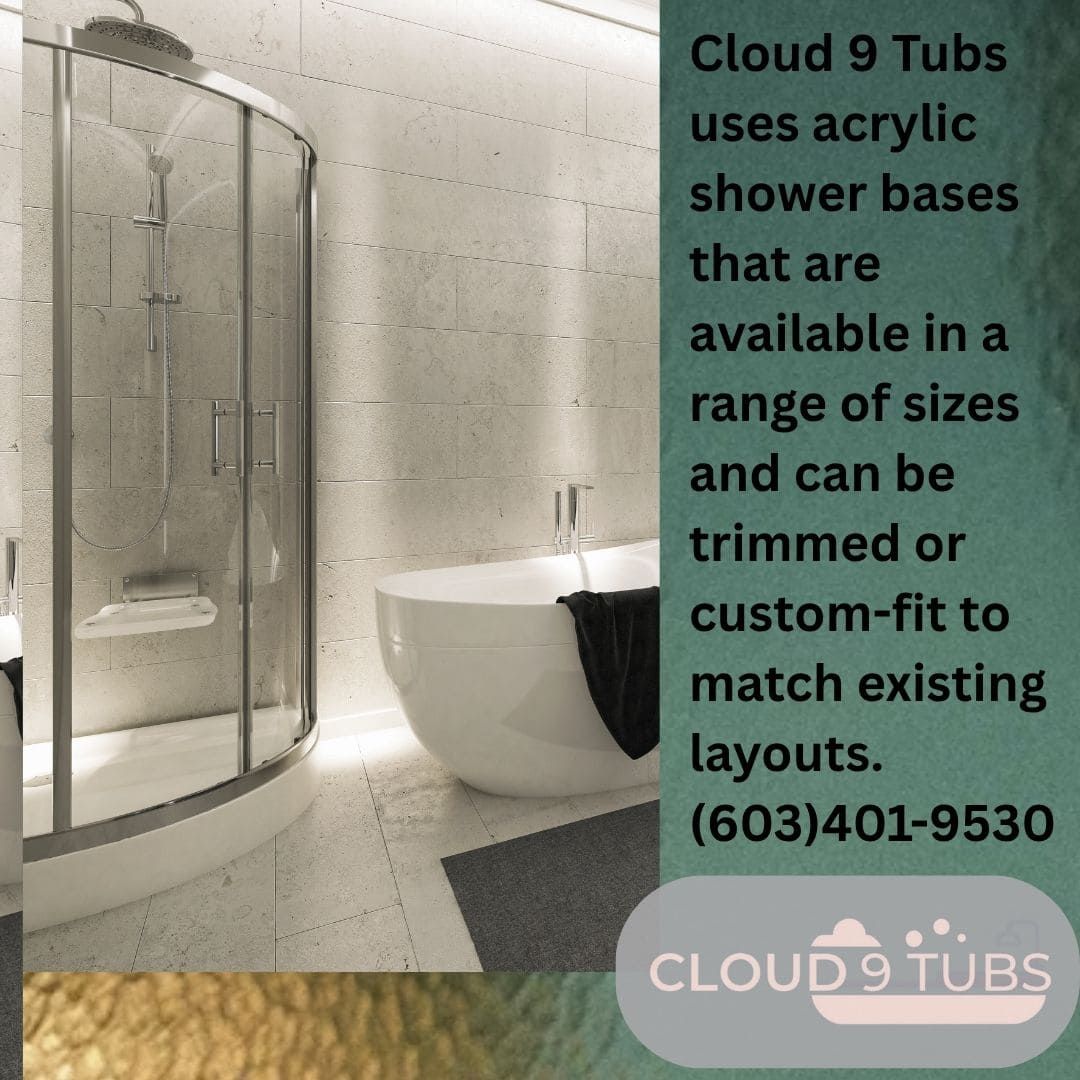
Mistake #3 – Incomplete Waterproofing
Missed Steps Behind the Walls
Skipping or misapplying waterproof materials behind shower walls increases the risk of long-term water damage. Water-resistant backing boards should be installed behind the shower walls to resist moisture. But these boards alone are not waterproof.
A waterproof membrane (either sheet or liquid-applied) must be used on top of the board to create a continuous barrier. Without this layer, water can seep into the framing behind tiles or wall panels.
Joints, corners, and built-in shelves (niches) are common failure points. Each of these areas should be sealed with waterproof tape and membrane. This keeps water from slipping through small gaps, which are often hidden after tile or wall panels are installed.
At Cloud 9 Tubs, we follow national installation standards for bathtub-to-shower conversions, using tested systems that prevent leaks and meet local building codes in New Hampshire.
Hidden Damage Over Time
Even small waterproofing mistakes can lead to mold, mildew, or structural damage that is expensive to fix. Moisture behind walls doesn’t always show right away. Hidden leaks can rot wood studs, loosen tiles, or soften and crumble drywall. Mold can also form, especially in poorly ventilated bathrooms, which may create health concerns. Mold problems can begin within 24 to 48 hours after water exposure.
At Cloud 9 Tubs, we’ve seen showers only a few years old already showing signs of water damage, mainly because basic sealing steps were missed. Our approach when converting a bathtub to a shower always includes full wall prep and flood testing before final finishes go up.
Mistake #4 – Overlooking Accessibility and Functionality
Entry Points and Layout
Poor entry design can make a tub-to-shower conversion harder and less safe to use, especially for older adults. Many traditional bathtubs require stepping over a 14–to 17-inch wall. Replacing this with a low-threshold or barrier-free shower base improves safety and accessibility. This is important in homes where mobility may change over time.
Entry width also matters. A minimum of 22 inches is recommended, though 30 inches or more allows better movement. In tight bathrooms, it’s important to avoid door swings that block entry or bump into vanities or toilets. Sliding doors can work better in compact layouts.
Cloud 9 Tubs works with Dover homeowners to plan layouts that match how the space is used, not just how it looks.
Planning for Long-Term Use
A good bathtub-to-shower conversion should work well both now and later. Built-in seating gives users the option to sit while bathing. This is useful not only for aging in place but also for short-term recovery after injury or surgery.
Handheld showerheads with sliding rails or adjustable mounts add flexibility, letting users wash comfortably whether standing or seated. These are especially helpful in households with children or pets.
Grab bars need solid wall support to be safe and effective. They should be anchored into the wall blocking rather than just drywall or tile. Even if grab bars aren’t installed right away, it’s a good idea to plan for them by reinforcing the wall framing during the
tub-to-shower conversion. This makes it easier and safer to add them later if needed. Designing for functionality upfront avoids expensive rework later and helps the space adapt over time.
Mistake #5 – Attempting DIY Without the Right Experience
Common Errors in Self-Installations
DIY tub-to-shower conversions may lead to costly errors in drainage, waterproofing, and finish work. Homeowners may start a project with confidence but run into problems during key steps. For example, setting a shower pan without the proper slope can cause standing water. Installing tile without even spacing or backer board support may lead to cracking or leaks.
One of the most frequent DIY issues is poorly sealed shower doors. Even a slight gap can allow water to leak onto floors and damage surrounding walls. Another risk is not recognizing structural conflicts, like when drain relocation isn’t possible due to floor joists or when walls aren't square. In short, these are mistakes that impact long-term durability and safety.
When Professional Help Adds Value
Licensed contractors understand how to meet the code, protect the home, and reduce long-term risk. A quality tub-to-shower conversion involves more than installing fixtures. It requires knowledge of local building codes and may require permits depending on the scope of work. Dover's building department can confirm specific permit requirements for your project.
At Cloud 9 Tubs, we handle permitting, use code-approved materials, and offer written labor warranties. That means if anything goes wrong, the homeowner isn’t left on their own.
Professional crews also finish jobs faster. A skilled team can often convert a bathtub to a shower in just a few days. While DIY may seem cost-effective at first, uncorrected issues often lead to repairs that cancel out any savings.

Working with Cloud 9 Tubs in Dover, NH
Local Knowledge and Specialized Experience
Cloud 9 Tubs brings hands-on experience with tub-to-shower conversions in Dover and surrounding New Hampshire towns.
Our team understands the unique characteristics of homes in the area, whether it’s dealing with older subfloors, tight layouts, or outdated plumbing. We’ve worked in properties ranging from compact ranch homes to multi-story colonials, which helps us anticipate challenges before they become costly delays.
We also follow local permit requirements and apply building code knowledge specific to Strafford County. That means fewer inspection setbacks and smoother project timelines.
Project Approach
We prioritize long-lasting results through smart planning, durable materials, and careful installation. Each project begins with a site visit to confirm dimensions, plumbing locations, and structure. Then, we recommend materials that match the customer’s usage needs, such as low-maintenance acrylic panels or non-slip shower bases.
Prep work includes moisture-resistant backing boards, proper slope for drainage, and thorough sealing of joints and corners. The goal is to avoid the common problems, like mold or leaks, that happen when shortcuts are taken. We maintain clear communication throughout the job, and we always review the work with the homeowner before final sign-off.
Why Many Choose Local Services
Working with a local contractor often leads to better results and better service. Scheduling is easier when the crew is nearby. Questions and follow-up visits don’t involve long wait times or phone trees. And because we’ve completed similar jobs throughout Dover, we can offer realistic guidance based on what works in comparable homes. Whether it’s drain placement in a slab foundation or choosing a base that fits around existing walls, local experience often saves time and money.
Getting Better Results from Your Tub-to-Shower Conversion
Avoiding common mistakes protects your investment and ensures the shower performs well for years. Converting a bathtub to a shower can improve daily use, safety, and space efficiency. But small oversights, like ignoring drain placement or skipping proper waterproofing, can lead to problems that are expensive to fix later. By planning carefully, using the right materials, and working with experienced professionals, you reduce the chances of issues like leaks, poor drainage, or accessibility problems.
At Cloud 9 Tubs, we work with Dover homeowners who want their tub-to-shower conversions done right and without delays. We know the local building codes, common bathroom layouts, and what materials hold up best in New Hampshire homes. By working with a local team like ours, you get faster service, clear communication, and a shower that’s built to last.
If you're considering a tub-to-shower conversion, it’s worth taking the time to do it right the first time.
Contact Cloud 9 Tubs to schedule a consultation or ask questions about your project. Call us at
(603) 401-9530 or email
info@cloud9tubs.com to speak directly with a local expert.
Blog
